Having some trees in your courtyard or garden can be a perfect way to add beauty and charm to your outdoor space. However, it's hard to find the right plants that will look great in your courtyard without damaging the foundation of your house or other underground utilities.
Most people wouldn't even think about putting trees near their houses because of the fear of damage, but there are a select few plants that have non-invasive roots.
Small trees with non invasive roots are the perfect solution for you!
These plants will add much-needed greenery to your landscape which will soften the hardscape without threatening the integrity of your constructions.
Some great examples include Japanese maple (Acer palmatum), Eastern redbud (Cercis canadensis), Fringe Tree (Chionanthus virginicus), and Gray Dogwood (Cornus racemosa) just to mention a few.
So, you can trust that you’ll find a perfect fit for your landscape but first let’s take a look at the types of roots and what you should look out for.
Types of Tree Roots
Before you choose a specific tree, it's important to understand the different types of roots and how they grow. Tree roots fall into two categories — shallow and deep-rooted trees.
You'll often find them called fibrous and tap roots respectively.
Shallow-rooted trees have roots that spread out laterally at or near the surface of the soil while deep-rooted trees have an extensive system of vertical downward-growing roots.
Shallow-rooted trees are generally less invasive for structures beneath than deep-rooted trees. This means that their root systems can still cause damage to structures and pavement if planted too close to them.
Besides, there are instances where a tap-rooted tree will be ideal especially when you don't want them growing laterally.
Therefore, it’s important to know the details of the type of tree you want to plant in your courtyard or garden. For your peace of mind, we've done a bit of research and compiled a list of small trees that will play well with other garden structures.
Ideal Planting Location
Ideally, you should plant trees at least 10 feet away from your house and other structures to ensure that their roots don't cause any damage. It’s also important to select a spot that gets plenty of sunlight and has well-drained soil.
List of 13 Best Small Trees with Non Invasive Roots
1. Japanese Maple (Acer palmatum)
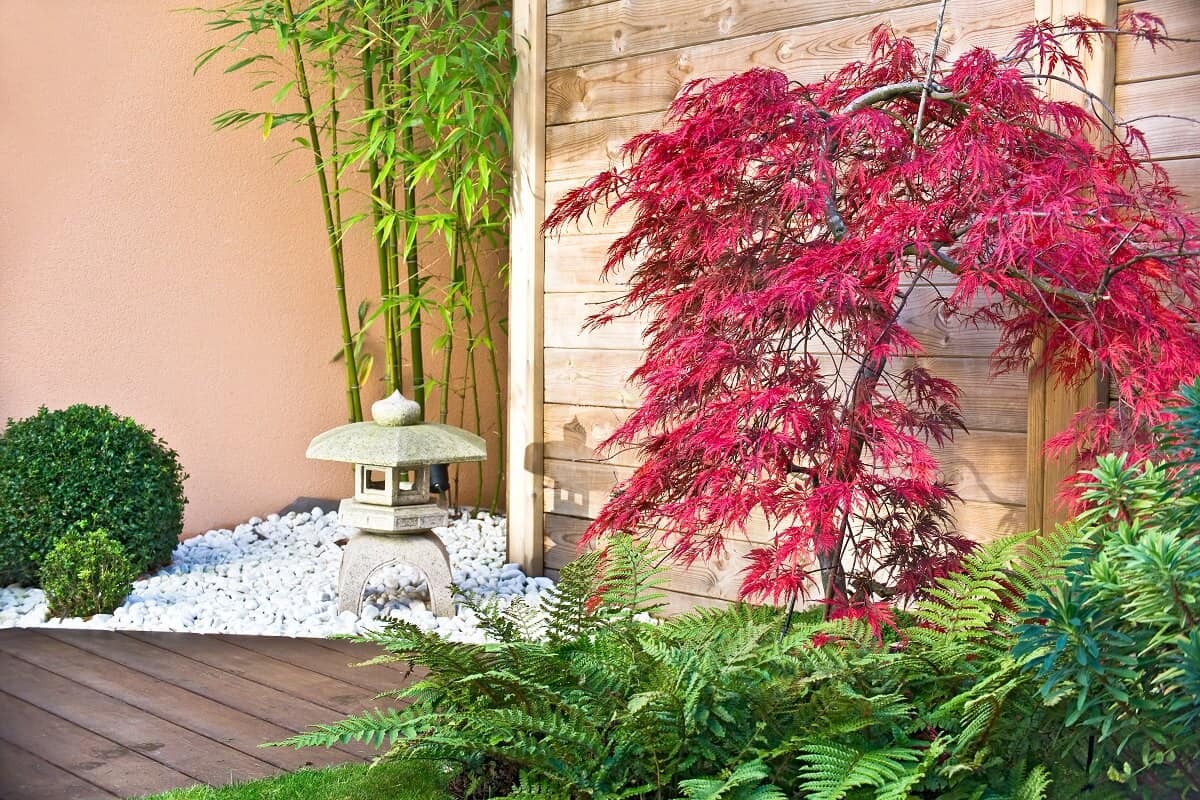
The Japanese Maple (Acer palmatum) is a strikingly beautiful deciduous tree that has been cultivated for centuries in Japan. It is an excellent choice for smaller courtyards or gardens, as it typically grows to no more than 15-25 feet tall and wide.
The vibrant foliage and cascading branches create a beautiful canopy over your courtyard.
The only drawback is that it has a slow growth rate and its size can be kept in check with regular pruning. When you take care of it, it'll produce a lovely display of foliage that changes from green to yellow and orange in autumn.
The Japanese Maple has shallow root systems and is usually considered non-invasive when planted properly.
You may also be interested in Best Trees for Privacy Screen That Grow Fast.
2. Star Magnolia (Magnolia stellata)
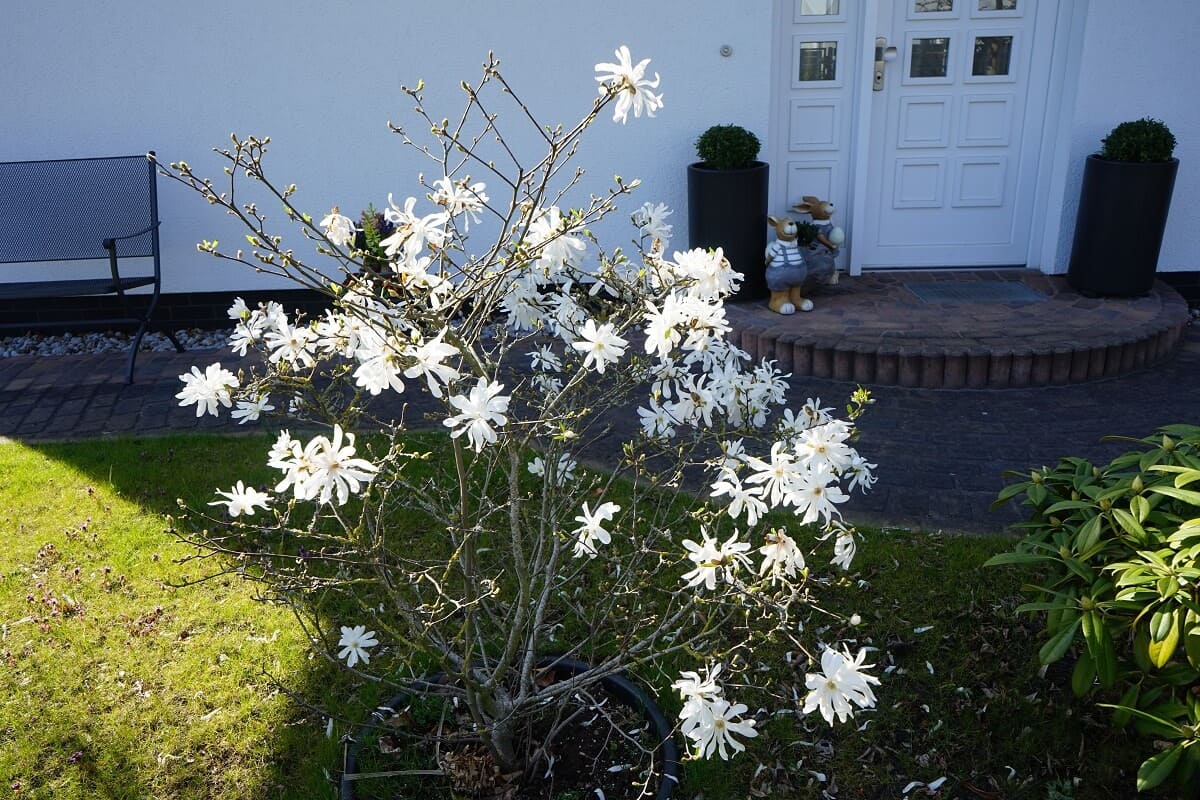
The Star Magnolia is an attractive deciduous tree that produces fragrant white blooms in early spring.
It typically grows to a height and width of 10-15 feet and has a slow to moderate growth rate. Its shallow root system makes it a great choice for small courtyards as it is unlikely to cause any damage.
3. Eastern Redbud (Cercis canadensis)
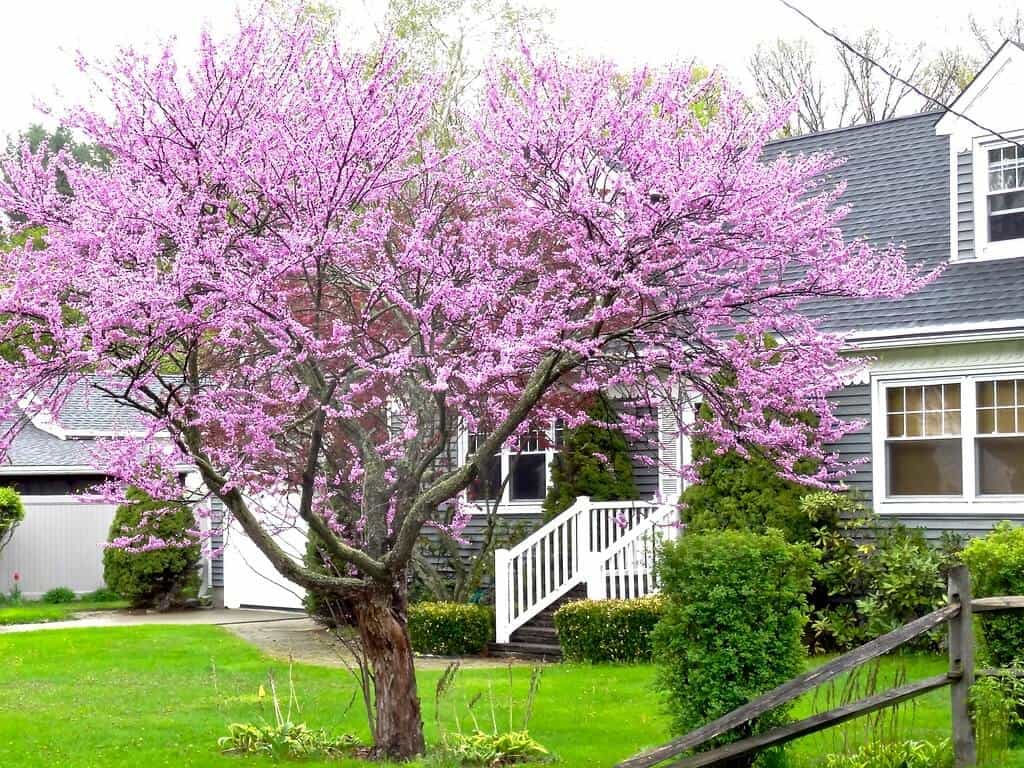
This small deciduous tree produces stunning purple flowers in spring. The showy lavender-pink blooms of the Eastern redbud make it a popular addition to any courtyard landscape.
It has a low-growing, spreading form with thin roots that don't typically spread beyond its drip line.
Typically, it grows to a height and width of 10-20 feet and has a slow growth rate. Its root system is shallow and non-invasive, making it a great choice for small spaces.
4. Crepe myrtle (Lagerstroemia indica)
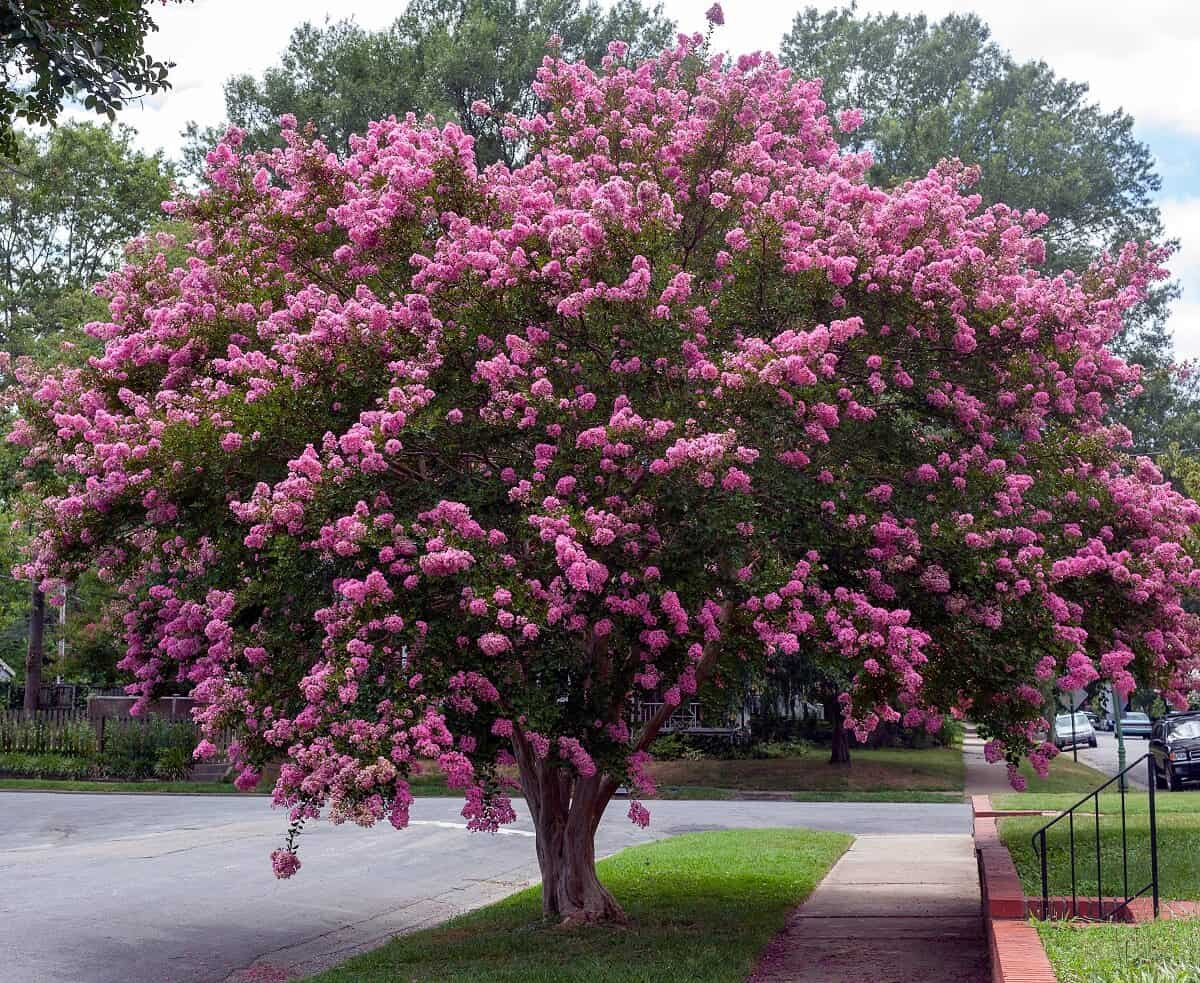
The common Crepe myrtle is a deciduous, small to medium-sized shrub or small tree with a variable, moderately dense habit, often multi-stemmed form.
It grows to a height of 15–25' and a spread of 6–15' at maturity.
The showy pink flowers have wrinkled petals like crepe paper. The foliage is dark green changing in fall to yellows, oranges, and reds. The thin gray bark is exfoliating, exposing a smooth, varicolored under bark ranging from brown to gray.
5. Fringe Tree (Chionanthus virginicus)
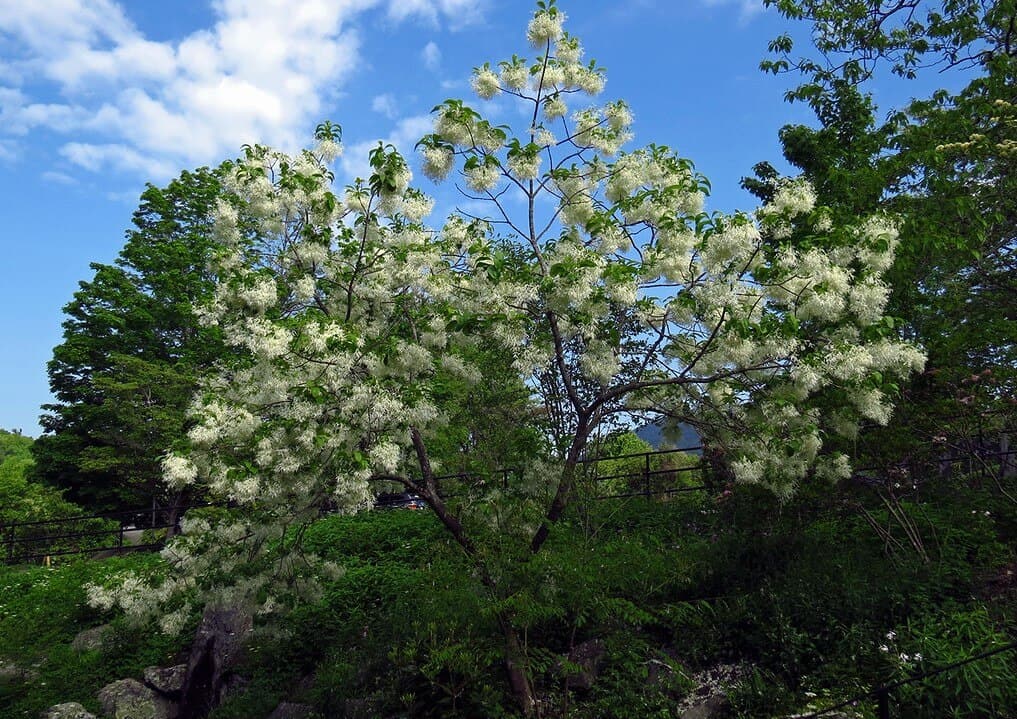
This deciduous tree can reach heights of up to 20 feet tall and is often used as a specimen plant in landscaping due to its attractive white flowers and gray barked trunk.
While its lateral roots can extend far beyond the canopy’s edge, they remain relatively shallow which makes them less likely to cause structural damage or disrupt underground utilities like pipes or wires when planted in close proximity to buildings or other hardscapes.
6. Orchid tree (Bauhinia variegata)
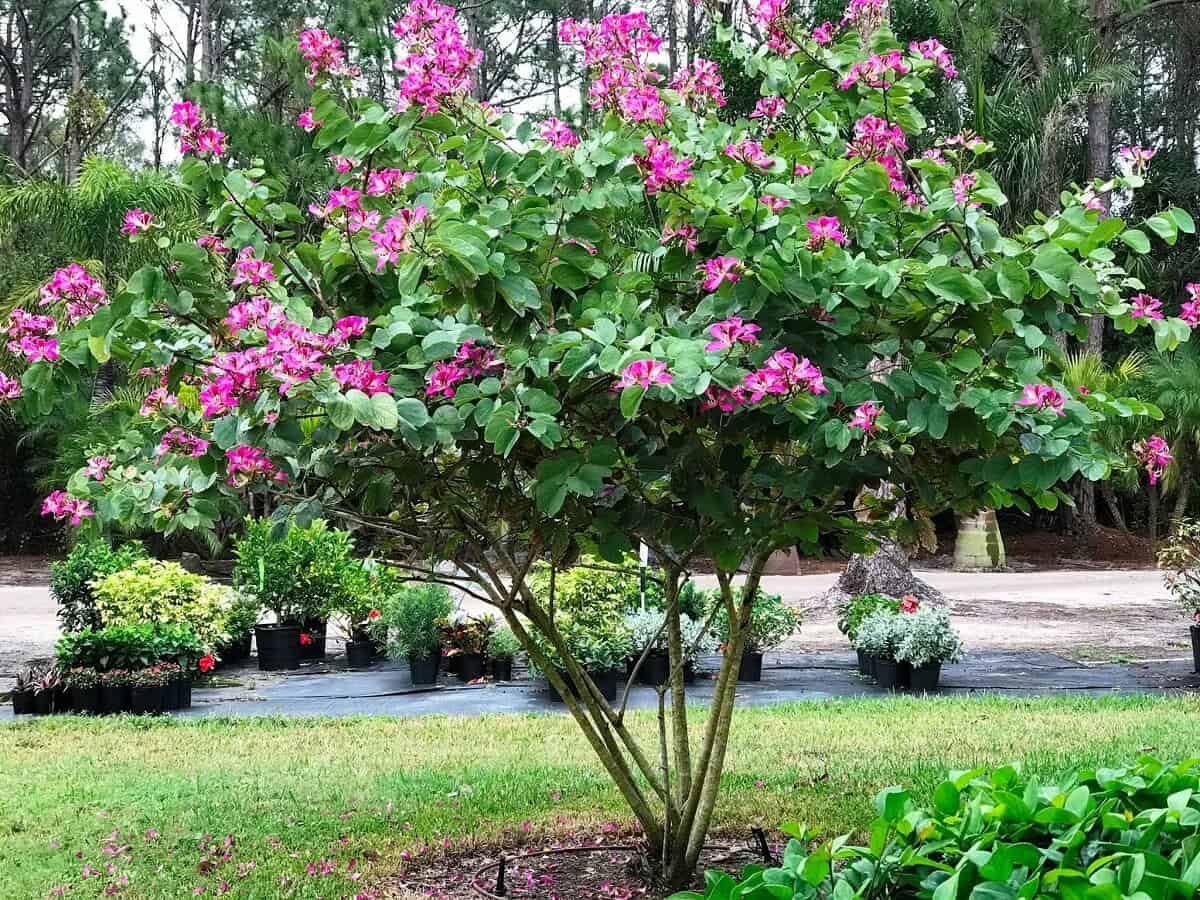
Image Credit: ArtisTree
Also known as Bauhinia variegata, this evergreen tree has long, leathery leaves that are mottled with white and pink. It produces fragrant, pale pink flowers in late fall to early winter.
It typically grows to a height of 20-30 feet tall with an equal spread and has a moderate growth rate. Its roots remain fairly shallow and tend not to cause any damage when planted in close proximity to buildings.
7. Dwarf Lemon Tree (Citrus x lemon)
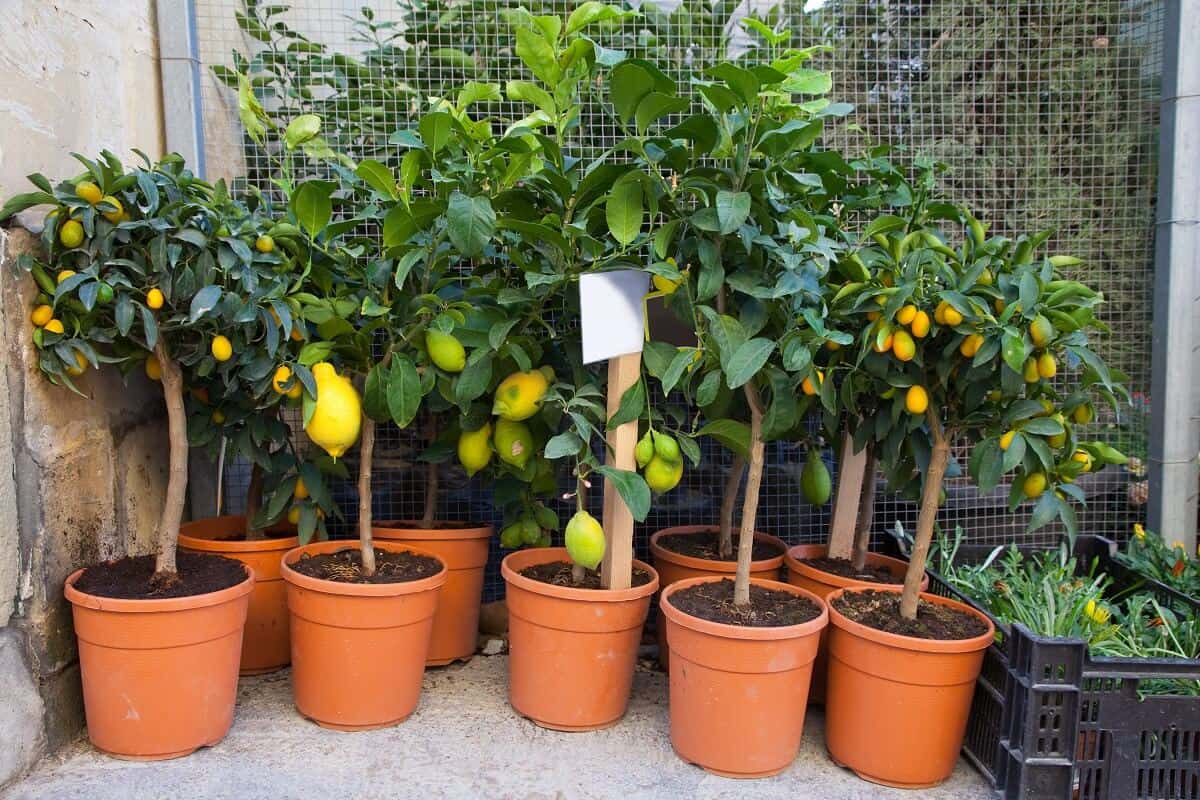
If you want a tree around your kitchen or dining area, the dwarf Lemon tree is a great option among the small trees with non invasive roots. For starters, it repels flies and smells heavenly good.
It is a small tree that grows to about 10 feet but can be pruned to keep it even smaller. The leaves are light green and evergreen, providing year-round beauty.
Here's a step-by-step guide on how to grow lemon trees from seed.
8. Crabapple Tree (Malus spp.)
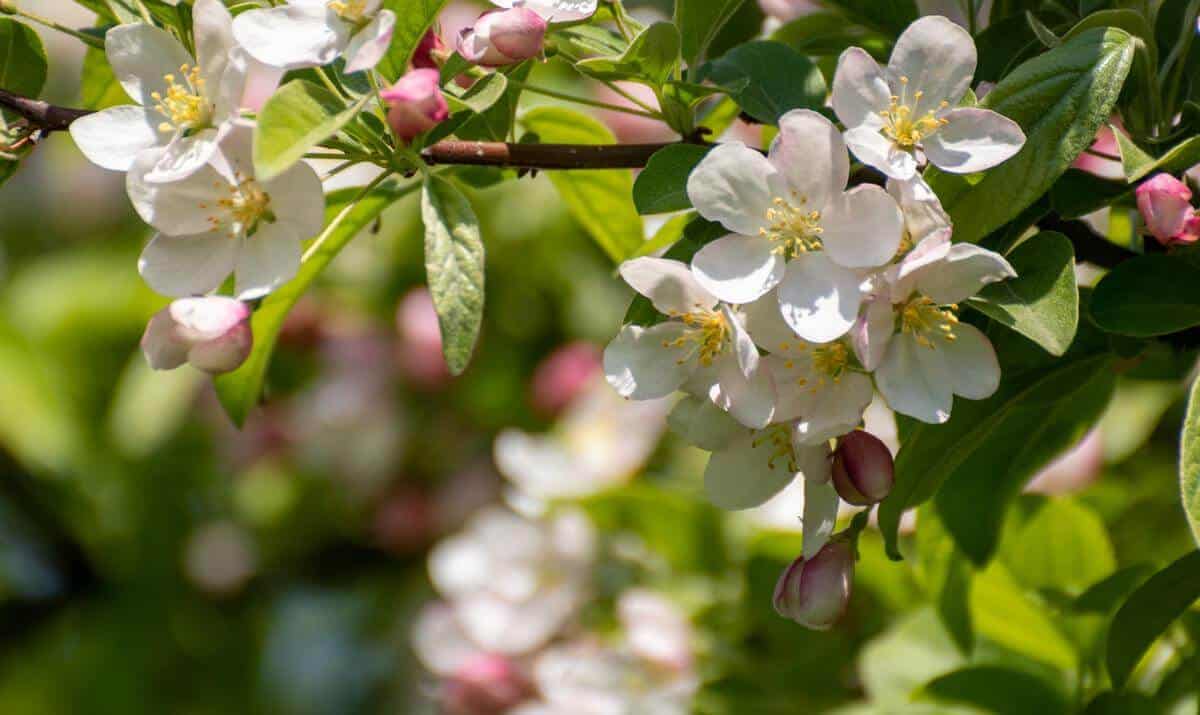
The Crabapple tree has a wide variety of species and cultivars, making it perfect for backyard landscaping. It produces beautiful white or pink flowers in spring followed by small yellow-green fruits.
It can reach heights up to 25 feet with an equal spread. Its shallow root system makes it a great choice for those who don't have much space.
Update: While this tree might be an interesting addition to your landscape due to its beautiful flowers, there's mixed feelings about their invasiveness or lack thereof. I know some people who've had nothing but the best experience hence their inclusion on this list.
However, I recently learned that there are others with contrary opinion. For instance, Eleanor commented on Pinterest as follows, "They have absolutely the most invasive roots that never die. They spread many feet away from the base of the tree. I mast have cut out at least 50 sprouts today. The majority are from a tree I had cut down and the rest was from a tree that I do have in the yard. It is going to cost me lots of money to remove all these roots and the tree."
And, Tara said, "If u walk barefoot in your yard, u don’t want a crabapple tree unless u like walking on marbles. They get beautiful flowers once a year but imo it’s not worth the amount of waist (berries) they drop in the yard."
Therefore, exercise caution while selecting crabapple tree for your next landscape project.
9. Dwarf Korean Lilac (Syringa meyeri 'Palibin')

The dwarf Korean lilac is a small deciduous flowering shrub. Fragrant pale lavender-purple flowers start blooming in mid-May, almost completely covering the shrub in early spring.
Occasionally the shrub will rebloom in late summer. It starts flowering at an early age. The leaves are dark green with smooth margins and pointed-ovate in shape.
You can plant this tree in small spaces such as below the windows (won't obstruct your view), containers, borders, and small gardens.
10. Ball Catalpa (Catalpa bungei)
The Ball Catalpa is a small to medium-sized deciduous tree. It grows to a height of 20–25' and has a rounded, upright habit. This lovely tree produces large white flowers with yellow spots in summer followed by long, thin dangling bean pods.
Its roots are shallow and non-invasive, making it an ideal choice for planting near sidewalks, patios, and driveways.
11. Kousa Dogwood (Cornus kousa)
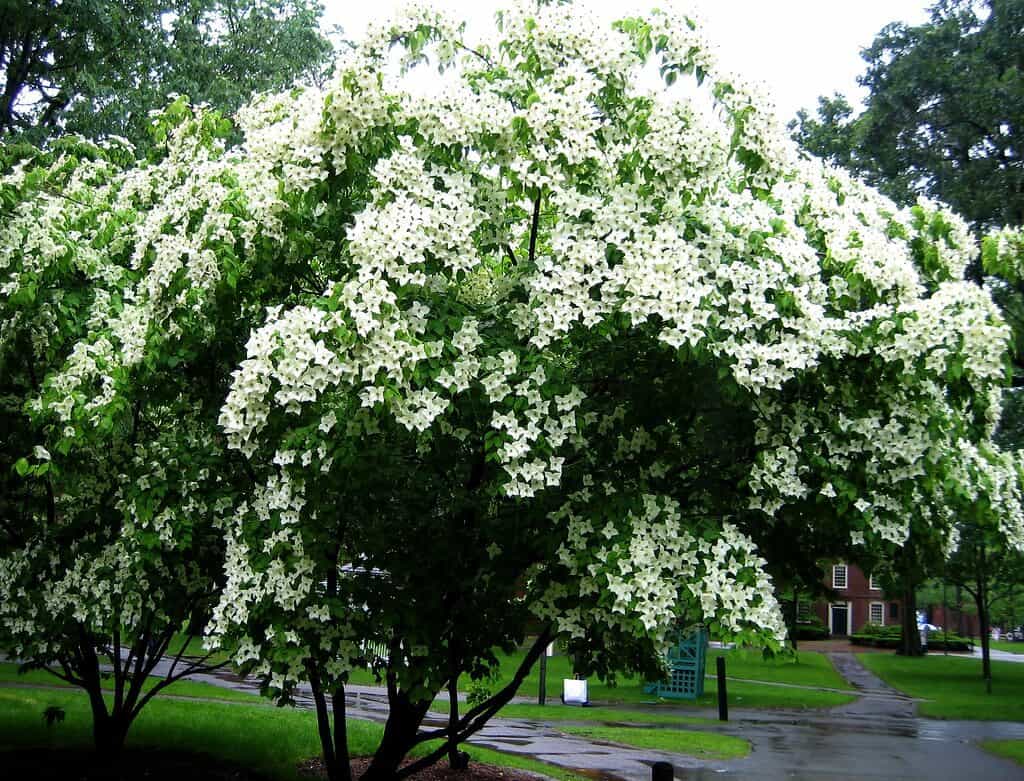
The Kousa dogwood is known for its delicate beauty, and it adds a toughness that makes this species an excellent choice for home landscapes and urban areas.
This is a medium-sized deciduous tree with an upright branching habit. It produces showy clusters of white flowers in spring followed by raspberry-like fruits that persist through fall.
It grows to a height of 20–30' as it matures and can be used as an ornamental shade tree in the landscape.
12. Gray Dogwood (Cornus racemosa)
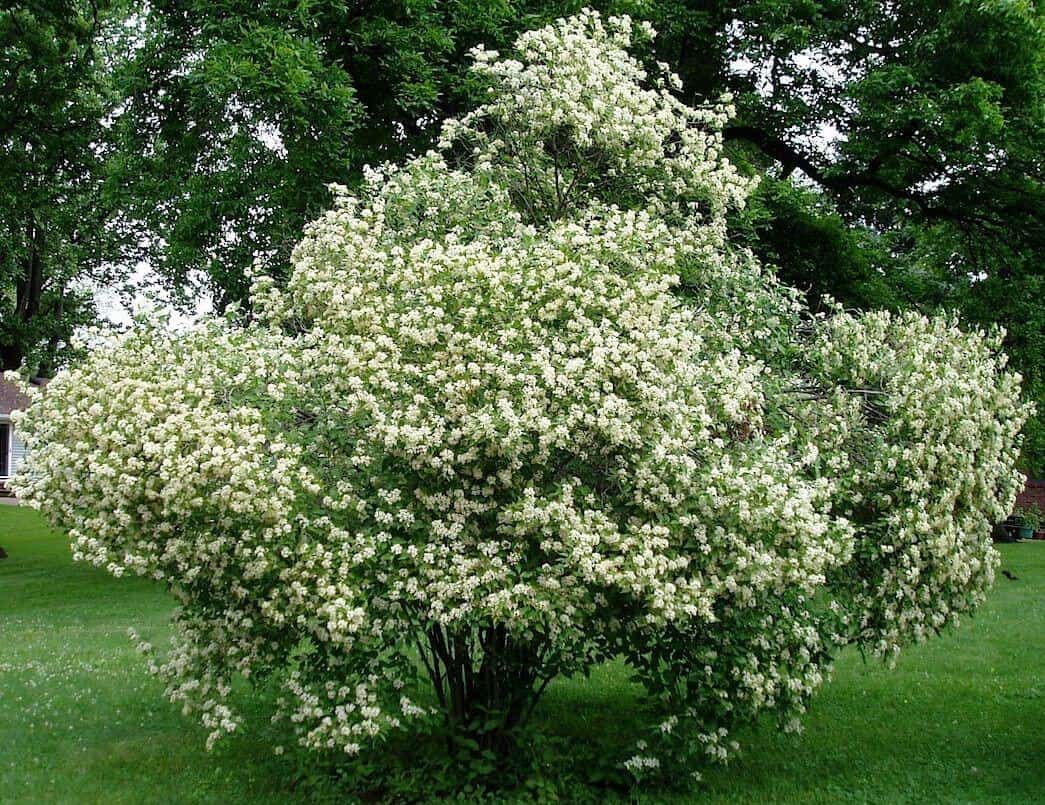
Gray dogwood is a very adaptable, native shrub that is excellent for naturalizing, especially in difficult sites, such as ponds and stream banks.
Although its suckering and spreading habit makes it impractical for formal plantings, it can be incorporated into the shrub border and useful as a mass planting. Creamy white clusters of flowers in May are followed by white berries in late summer that are quickly eaten by birds.
The tree can be used as a hedge, border, or accent plant and prefers moist, well-drained soils. It will grow to a height of 8–10' as it matures and can be pruned to maintain its desired shape.
13. Chinese pistache (Pistacia chinensis)

Chinese pistache is an excellent ornamental tree for any landscape, with its showy red and orange autumn foliage. It is also very drought tolerant, making it perfect for drier parts of the country.
This tree has a dense canopy that provides shade and grows to a height and width of 40–50’ when mature. It has fragrant clusters of white flowers in spring that lead to drupes of red-skinned fruit.
The tree is amazing for wildlife and provides food and shelter. It is hardy in USDA zones 6–9 and prefers well-drained soil.
Bonus: Tibouchina lepidota (Alstonville)
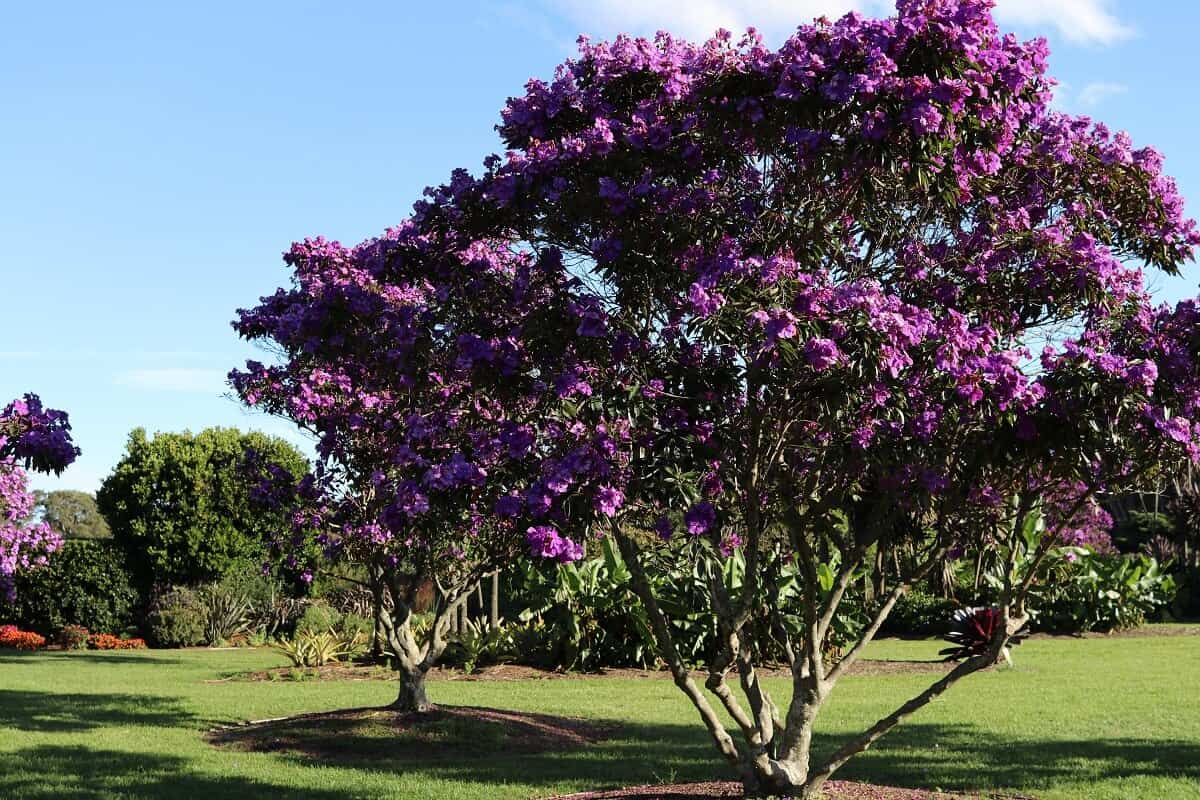
Tibouchina lepidota, a native of Australia, is an evergreen shrub with stunning purple flowers and glossy green leaves. It grows up to 10 feet in height, making it a great choice for small gardens and landscape accents.
It requires full sun and prefers moist soil but can grow in almost any condition as long as it gets adequate drainage.
The Tibouchina Lepidota produces bright purple flowers in the summer and is a great choice for attracting bees, butterflies, and hummingbirds to your garden. It is hardy in USDA zones 9–11.
Conclusion
These trees offer a variety of options for adding beauty and interest to your landscape.
Whether you're looking for an ornamental specimen tree, a shade tree, or something that will attract wildlife, these selections will provide the perfect fit.
From evergreen trees like the lemon tree and crabapple to deciduous flowering trees like the dwarf Korean lilac and Chinese pistache, you can find the perfect tree to fit your needs.
But what's even better, they're all small trees with non invasive roots which means no risk of damaging your house, septic tanks, underground pipes, and all other landscape structures!

had 2 crepe myrtles taken down about 14-15 years ago and still get sprouts in the area where the trees were. had the trees stumped, but the little roots around the area are still sending out leaves all these years later. don’t plant crepe myrtles
Those who think Crepe myrtles are not invasive have never had them.
We are always going out to grind the roots. Sprouts come up everywhere.
I have 3 in my yard and it’s a losing battle. But they are Hardy small trees and I love the blooms & foliage.
Need tall trunk large canopy green leaved true no flowers no fruit just green for my green shade garden in zone 4b .Hot summers cold winters deep snow . Any ideas will come in handy ,thanks.